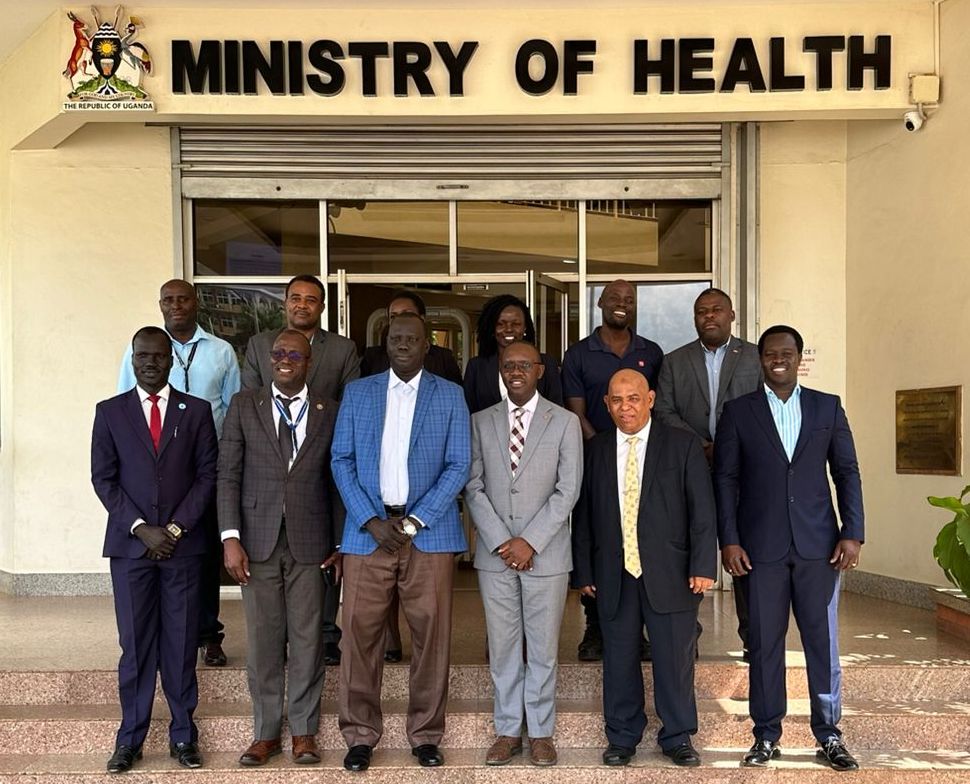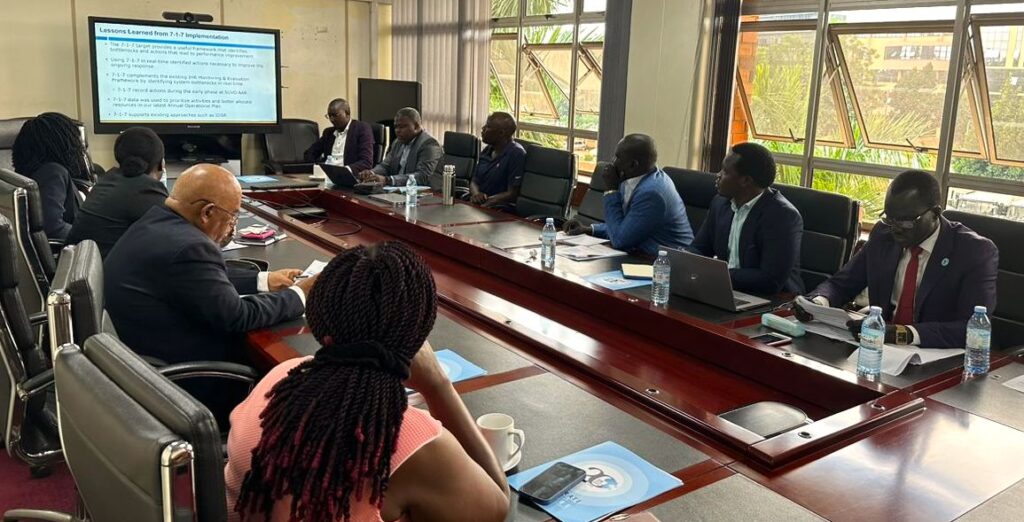After joining the 7-1-7 Alliance in May 2023, shortly after the Alliance’s inception, the country sent a delegation of Health Ministry officials to neighboring Uganda to learn from their experience—marking the first peer-to-peer visit within the 7-1-7 Alliance.
Under the leadership of Dr. Issa Makumbi, who heads the national Public Health Emergency Operations Center (PHEOC) and chairs the 7-1-7 Alliance’s Technical Steering Group, Uganda has leveraged 7-1-7 to optimize its disease detection and response performance since 2021—including during the recent Ebola outbreak.
We spoke with Dr. Angelo Goup Thon, Director of Health Security, Surge Capacity Development and One Health at South Sudan’s Ministry of Health, who participated in the visit.

Health Ministry officials from South Sudan and Uganda participating in the peer-to-peer visit
What prompted South Sudan’s decision to join the 7-1-7 Alliance?
Dr. Goup: South Sudan is a country hit by many emergencies. We are among the African countries that are currently facing multiple recurrent outbreaks like cholera, measles, polio and COVID-19 among other infectious diseases. We have a history of taking a long time to detect, notify and respond to emerging outbreaks. We need to be detecting more quickly to contain the spread and save lives. 7-1-7 offers concrete tools, which we believe will be useful to our health security approach, complementing our Integrated Disease Surveillance and Response framework and supporting our national PHEOC. We feel that it will help us beat the timeline.
7-1-7 offers concrete tools, which we believe will be useful to our health security approach.
– Dr. Angelo Goup Thon
Why was a peer-to-peer visit important to begin implementation of 7-1-7?
What were the highlights of the visit? What surprised you?
Dr. Goup: We were very well received. The leadership of the Uganda Ministry of Health not only welcomed us, but also made a point to be available and sit down with us for important discussions. That was extremely valuable.
One of the many highlights of the visit was a tour of the national Public Health Emergency Operations Center. Its director, Dr. Issa Makumbi, shared his team’s experience with 7-1-7 and showed us the related data.
We also toured the regional PHEOC of Kampala and had insightful discussions with representatives of the Infectious Diseases Institute (IDI) and the Uganda Virus Research Institute (UVRI), which are both involved in the 7-1-7 approach.
We were impressed by the drones IDI uses to deliver medicine to remote areas—up to 2 kg of medical supplies can go as far as 60 km—which could be helpful to reach a specific area in South Sudan. Finally, we had an opportunity to connect with our Ugandan colleagues on a social level during a delightful evening at the Uganda cultural center.

Health Ministry officials from South Sudan and Uganda participating in the peer-to-peer visit
What are the key takeaways from the visit? How will they inform your plans in the short and medium term?
We started working on our implementation plan for 7-1-7 in early 2023. During our visit to Uganda, we put together a roadmap. We will soon hold advocacy meetings and training at the national level. We will follow with a baseline assessment of our capacities in terms of surveillance and data collection and reporting at the national level and in all 10 states and three administrative areas. The next step will be to integrate 7-1-7 into our workflow.
Finally, we have plans to do a retrospective review of our outbreak responses in the past two years. We want to see how we fared against the 7-1-7 metrics and get ready to apply 7-1-7 to new threats. Our Ugandan colleagues have agreed to continue to work with us in the future through video calls and webinars. We feel fortunate to have their support and collaboration.